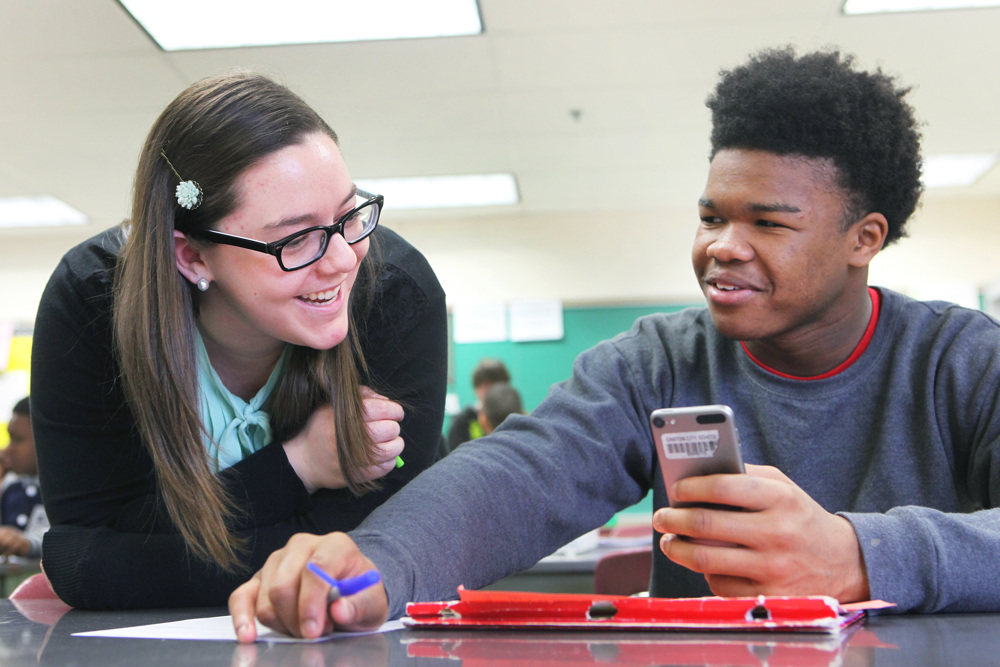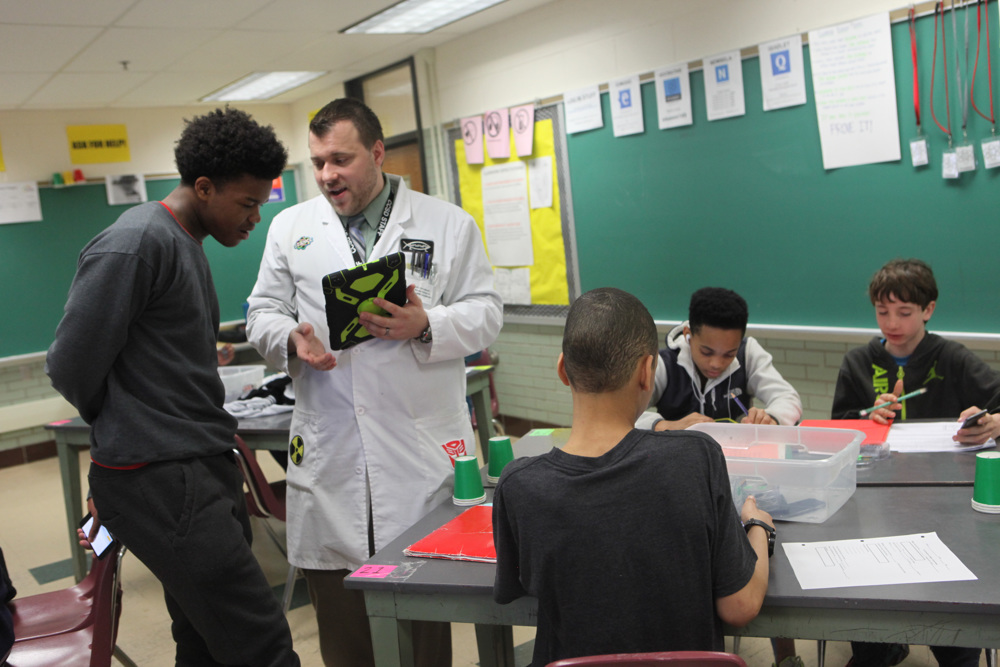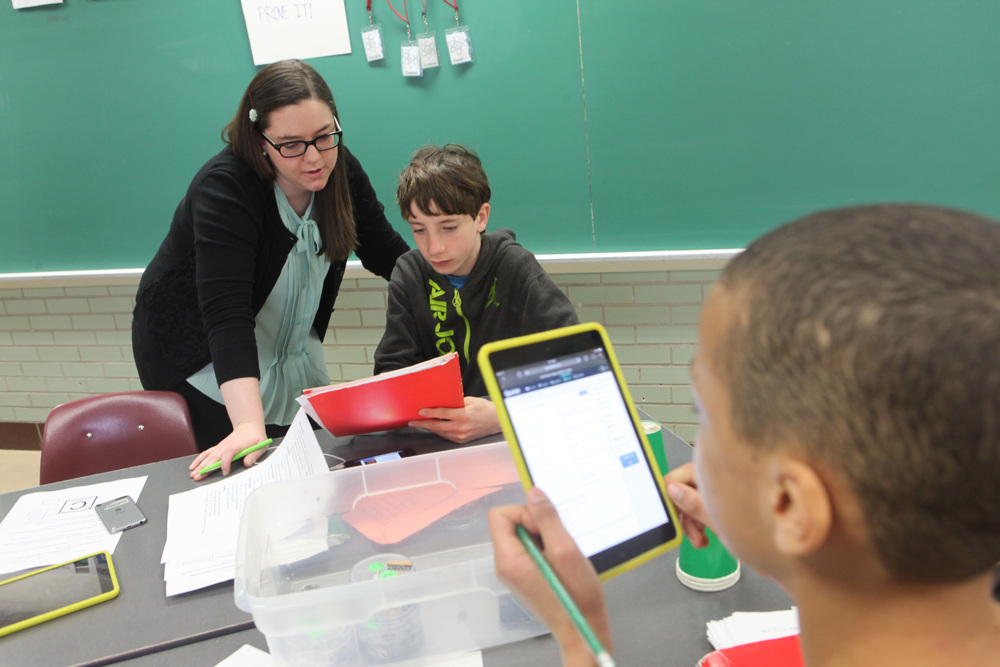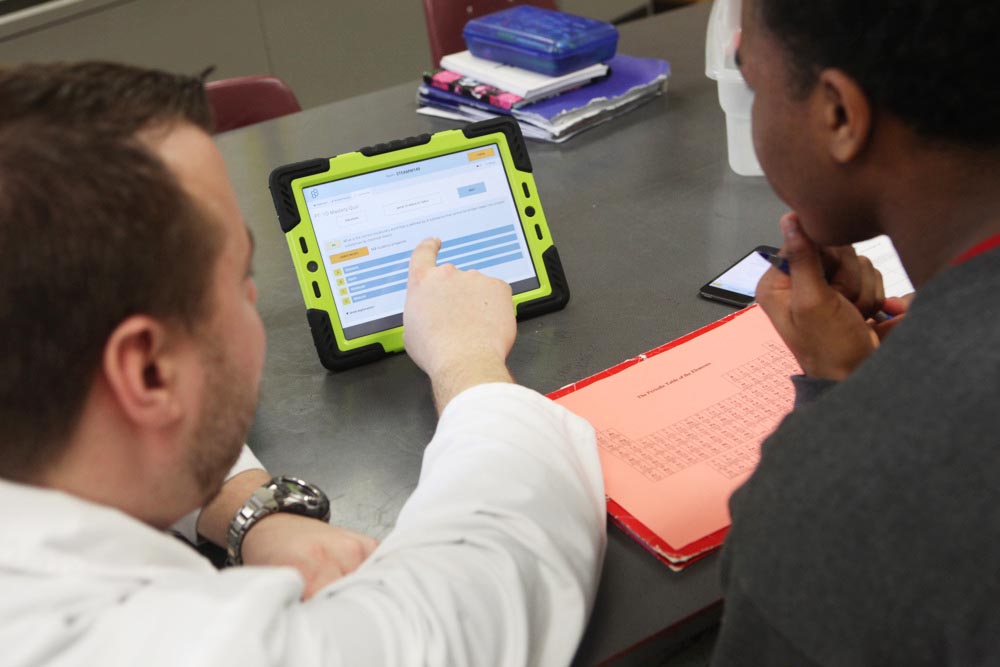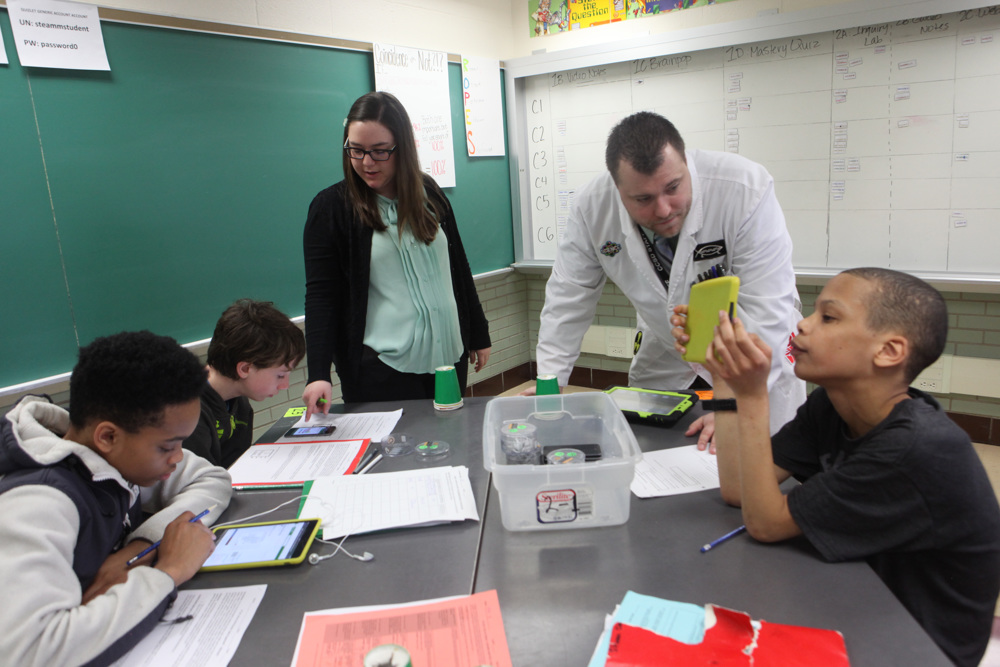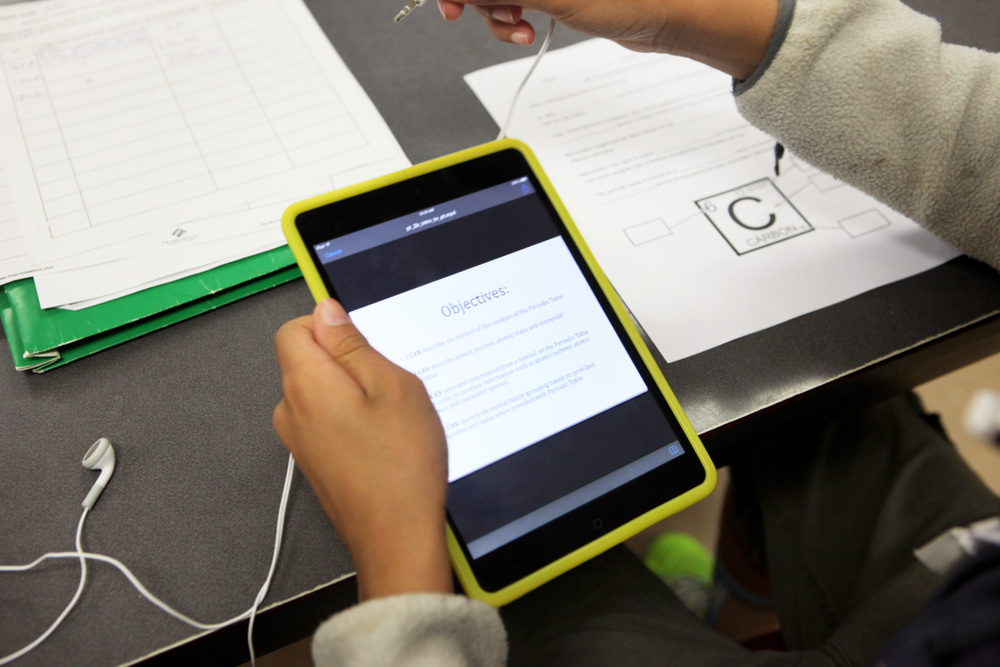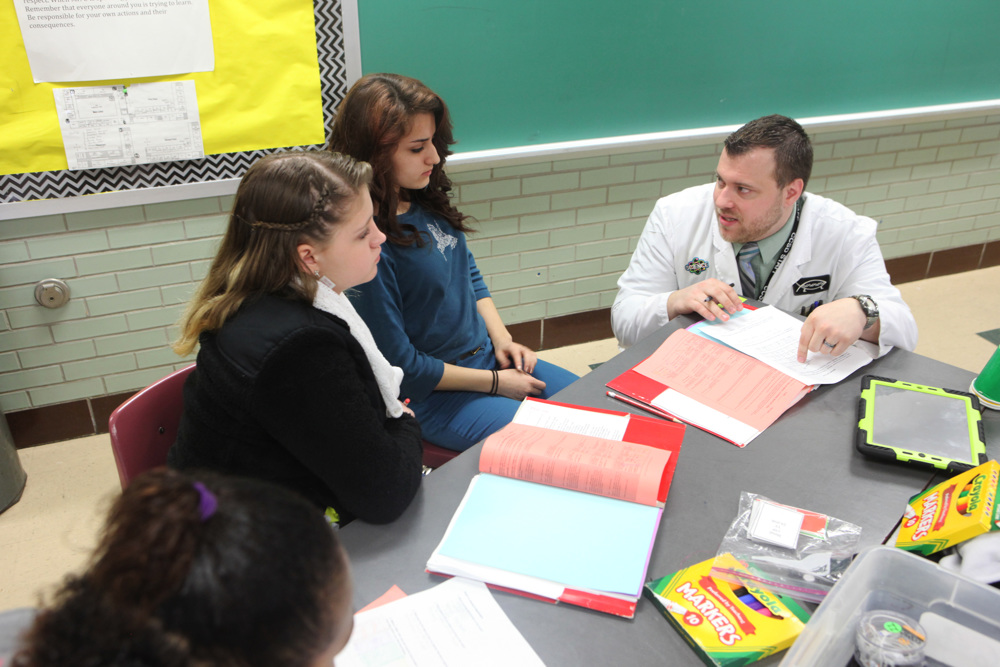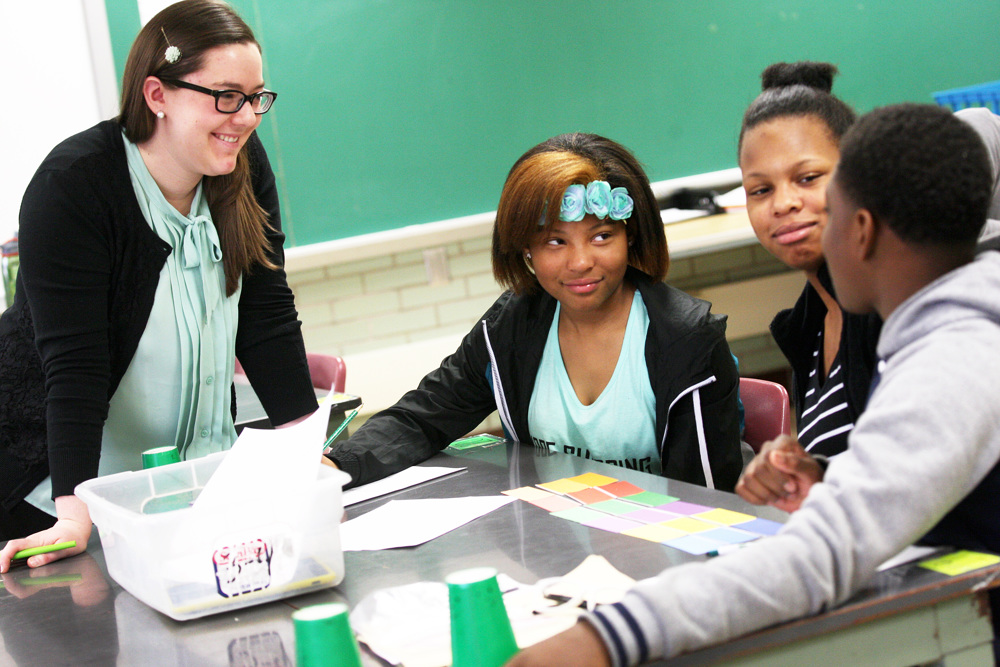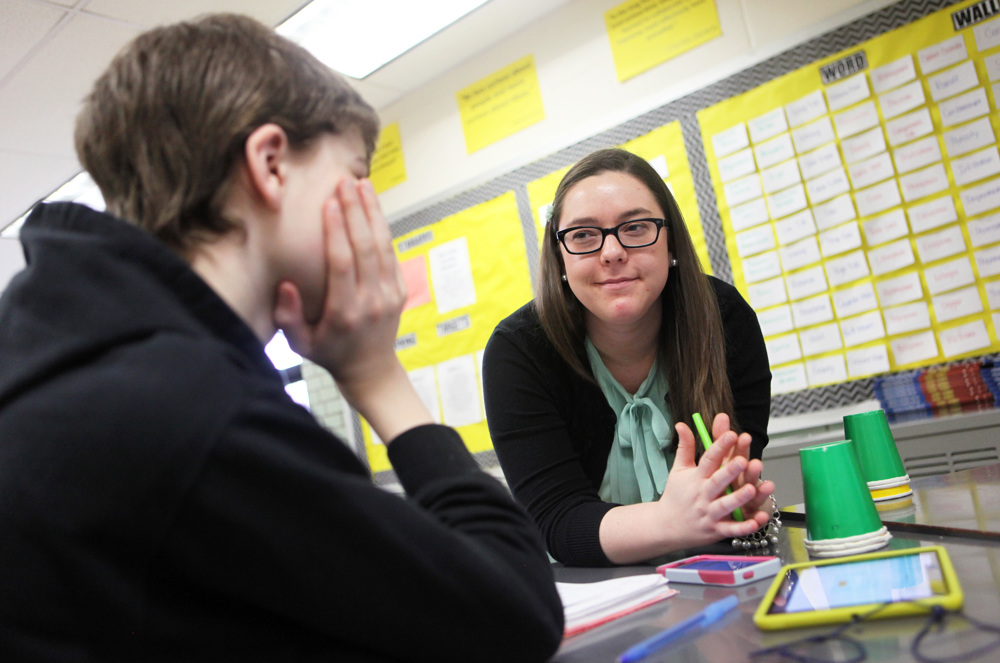News
From the newsletter: Tech in the classroom
In a growing number of contemporary classrooms, students do lessons on notebooks and tablets and smartphones. According to a recent survey on mobile learning from Project Tomorrow, 64 percent of middle school students agree that effective technology use increases their interest in what they are learning at school.
This past spring at STEAMM @ Hartford Academy in Canton, Ohio, the classroom of WW Teaching Fellows Chad Ostrowski and Elizabeth Gleixner was abuzz as students worked away on their iPods. Ms. Gleixner TF ‘14—paired with Mr. Ostrowski TF ’11 for her yearlong clinical practice during her master’s degree program—gave instructions to one group of students about their next activity while other students, alone or in small groups, finished previous assignments. In his white lab coat, Mr. Ostrowski monitored students’ progress on an iPad before working through a pH lab with three boys.
Mr. Ostrowski, who relies on school-issued iPods and iPads, has developed a systematic mastery-based learning model called The Grid Method. He gives students individualized learning goals, which they work toward on their devices at their own pace, then assesses their mastery digitally and displays results on a classroom progress grid.
A student motioned towards his iPod with a befuddled look. With a few audible taps on his tablet, Mr. Ostrowski checked the students progress, crouched down, and explained substances and mixtures in terms of marshmallow cereal. The student smiled as the content clicked and moved on with his lesson.
“Because they are working at their own pace a lot of the fear of failure and apprehension disappears,” says Mr. Ostrowski. “Students become more confident as learners.”
Fast forward to fall 2015: Ms. Gleixner is now leading her own algebra classroom at Wooster High School where each student has access to a MacBook Pro for video lectures, review games, assessments, and simulations, and a platform to support collaborative and group work.
“Having students work independently on computers instead of solely relying on me for instruction allows for an increased amount of small group instruction and intervention,” says Ms. Gleixner.
When structuring their lessons and technology plans for their classrooms, both Mr. Ostrowski and Ms. Gleixner try to start with the end goal and work backwards with technology, deciding on the most engaging or effective way to present the material.
“While teaching and encouraging 21st century skills are important,” says Ms. Gleixner, “there’s no point in using technology just to use it.” She adds that it is important to set expectations high from the beginning. “If students know that it is not acceptable to be using the technology in a way that differs from their instructions, and know what the consequences are for these behaviors, they are less likely to get off task.”
Mr. Ostrowski agrees that the use of technology must be rooted in good pedagogy and classroom management. “It’s only as good as the curriculum it is delivering to its recipients.”
Technology is, for both of these WW Fellows, a tool that allows them to reach each student on his or her content level and to adjust lessons and goals accordingly. For Mr. Ostrowski, this also means that students who once fell behind because of absences can now keep up with instruction remotely. Ms. Gleixner has kids expressing their appreciation for math for the first time.
“Through the Woodrow Wilson program, I have realized that encouraging a love of all things STEM is equally important to teaching mathematical skills,” says Ms. Gleixner. “I find that when we provide realistic examples with real-world applications and engage students through technology, they take a new interest in math.”
###
This story appeared in the fall issue of Fellowship, the newsletter of the Woodrow Wilson Foundation, in a section on digital learning. To see the full newsletter, click here.

